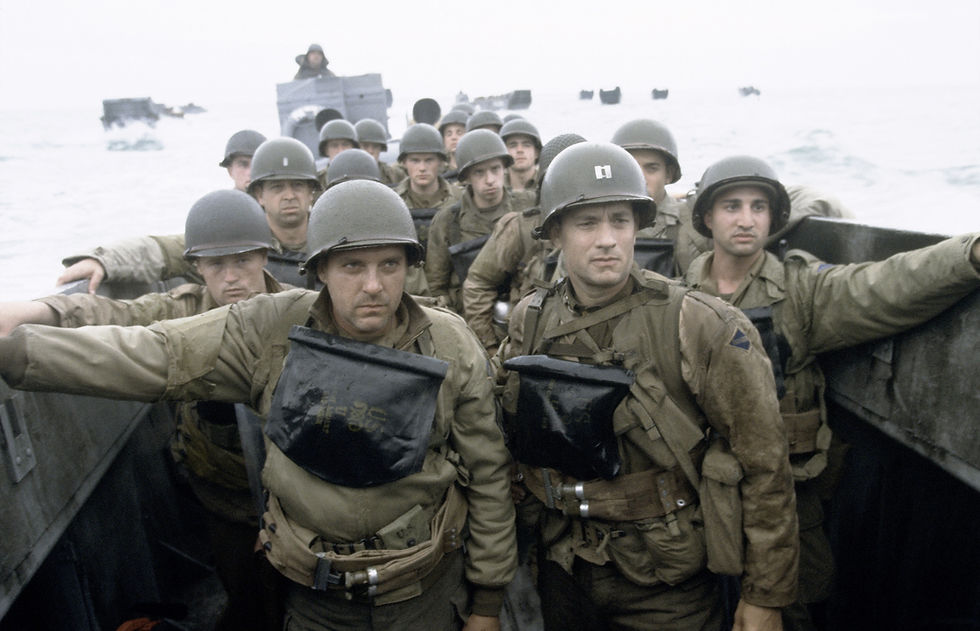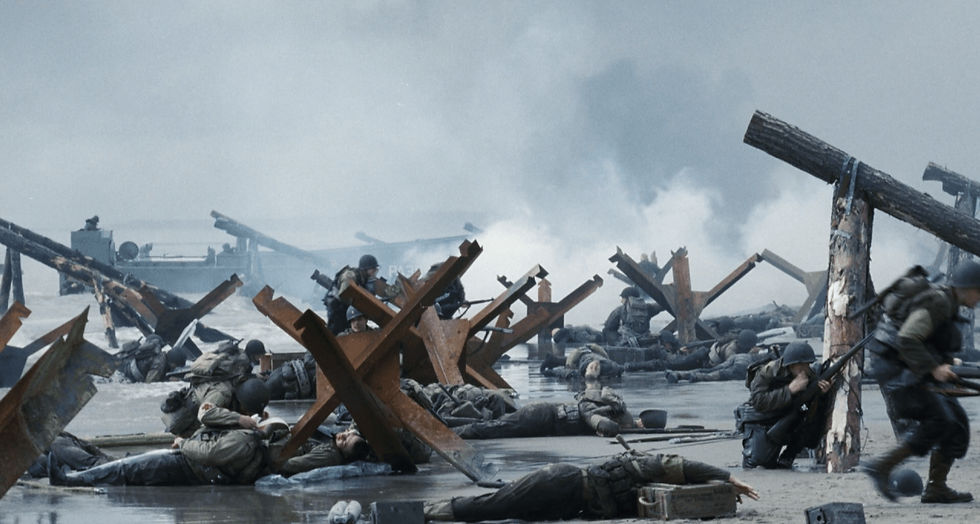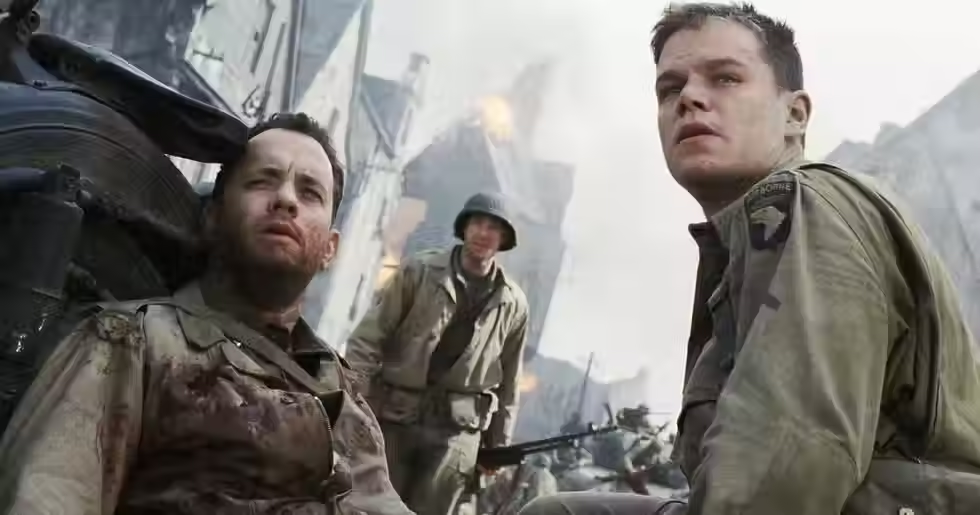Saving Private Ryan (1998)
- Soames Inscker

- Jul 13
- 3 min read

Steven Spielberg’s Saving Private Ryan is widely regarded as one of the most powerful and harrowing war films ever made. Released in 1998, it set a new standard for realism in war cinema and redefined the genre for modern audiences. Combining unflinching brutality with a deeply human story of sacrifice and brotherhood, the film is both a visceral experience and an emotional journey.
Plot Summary
The film opens with a breathtaking, near-documentary depiction of the D-Day invasion of Omaha Beach on June 6, 1944. The graphic and chaotic battle sequence immerses viewers in the horror and confusion experienced by Allied soldiers.

Following the invasion, Captain John H. Miller (Tom Hanks) is tasked with a seemingly impossible mission: to locate and bring home Private James Francis Ryan (Matt Damon), the last surviving brother of four servicemen. After three of Ryan’s brothers have been killed in combat, the U.S. government orders that Ryan be spared further danger.
Captain Miller assembles a small squad of soldiers, each with their own backgrounds and personalities, to penetrate enemy lines and find Ryan. The journey tests their resolve, camaraderie, and moral compass as they face constant threats and grapple with the cost of war.
Realism and Cinematic Technique

One of Saving Private Ryan’s most acclaimed features is its commitment to realism. The opening Omaha Beach sequence is widely praised for its meticulous accuracy and immersive intensity. Spielberg used handheld cameras, desaturated colours, and naturalistic sound design to recreate the confusion, terror, and violence of the battlefield in a way that had never been seen before on screen.
The film’s cinematography by Janusz Kamiński employs a muted colour palette and shaky camerawork to evoke the gritty, chaotic nature of combat. The sound editing — from the whizzing bullets to the screams and explosions — further immerses the viewer into the soldiers’ experience.
Performances

Tom Hanks delivers one of his most memorable performances as Captain Miller, portraying a leader burdened by responsibility and haunted by the weight of his mission. Hanks balances strength and vulnerability, embodying the reluctant hero archetype with nuance.
Matt Damon’s Private Ryan serves as the moral centre of the story, representing the individual human life that justifies the sacrifices made on the battlefield. Supporting cast members such as Tom Sizemore, Edward Burns, Barry Pepper, and Vin Diesel each bring authenticity and depth to their roles, creating a diverse and compelling portrait of men bound by duty and friendship.
Themes
Saving Private Ryan explores themes of sacrifice, duty, leadership, and the moral ambiguities of war. The mission to save one man amid the slaughter of thousands raises profound questions about the value of a single life versus the lives of many.
The film also confronts the dehumanizing effects of combat, the fragility of life, and the bonds forged between soldiers in extreme circumstances. It challenges glorified notions of war by presenting its horror and chaos unflinchingly.
Direction and Writing
Steven Spielberg’s direction is both grand in scope and intimate in detail. His ability to depict large-scale action alongside deeply personal moments elevates the film beyond a mere war epic.
Robert Rodat’s screenplay balances gripping action sequences with moments of reflection and character development, allowing the audience to connect emotionally with the soldiers’ journey.
Impact and Legacy
Saving Private Ryan was a critical and commercial triumph. It won five Academy Awards, including Best Director for Spielberg, and was nominated for Best Picture. The film influenced numerous subsequent war movies and has been praised for its respectful and realistic portrayal of World War II.
Veterans and historians have lauded the film’s authenticity, and it is often used as an educational tool to convey the realities of war.
Conclusion
Saving Private Ryan remains a landmark in cinematic history — a film that combines technical brilliance with profound emotional depth. It is a tribute to the courage and sacrifice of the Greatest Generation and a sobering reminder of war’s devastating cost.
Rating:
A masterful, unflinching portrayal of war’s brutal reality, balanced by a deeply human story of honor, sacrifice, and brotherhood.





